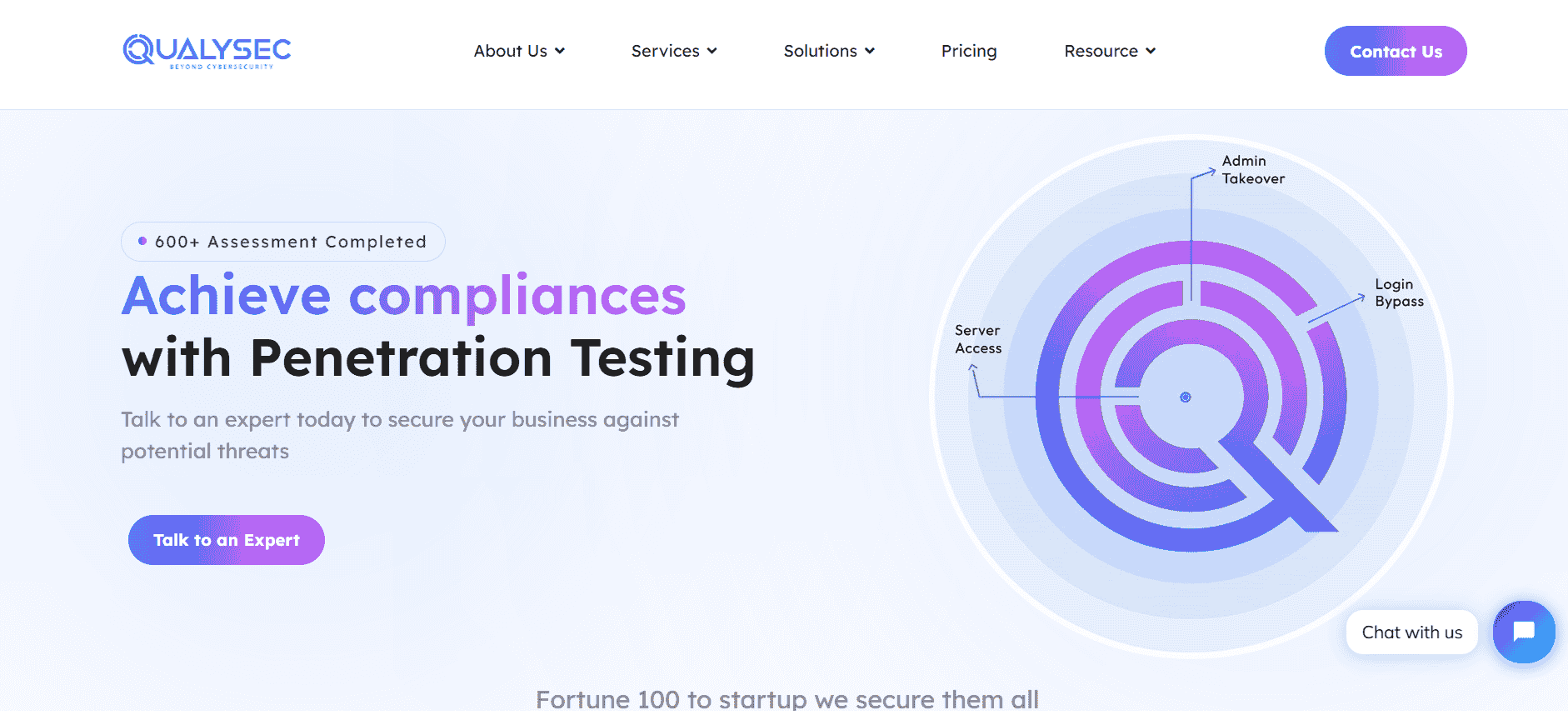In the realm of cybersecurity, Penetration Testing (pen testing tools) plays a pivotal role in identifying and rectifying vulnerabilities within a system. It is a proactive approach that simulates real-world attacks to assess a system’s security posture. To conduct effective penetration testing, a diverse set of tools is utilized, each tailored for specific tasks. In this discussion, we will categorize these tools, exploring their types and associated features.
Types of Pentesting Tools
Open-source Pentesting Tools
Open-source pen testing tools are instrumental in the cybersecurity community. They are freely available, crafted, and maintained by a global community of developers. This category encompasses a wide range of tools across various domains.
Web Application Penetration Testing Tools
These tools are expressly designed for web applications. They operate online, executing tests on web applications by accessing their URLs. Typically, they incorporate DAST (Dynamic Application Security Testing) techniques, complemented by manual penetration testing.
Network Penetration Testing Tools
Network penetration testing involves simulating hacker-style intrusions to unearth network vulnerabilities. Specialized tools, such as NMap, facilitate network mapping and vulnerability detection in this context.
Mobile Application Penetration Testing Tools
Distinct from web app testing, mobile application penetration tests necessitate more human intervention. There are no one-size-fits-all tools for mobile apps; expert pen testers are essential to assess mobile app security effectively.
Cloud Penetration Testing Tools
Cloud pen-testing predominantly involves cloud configuration reviews, examining security in accordance with cloud service provider agreements. Experts identify misconfigurations, assess virtual machines, and ensure workload isolation.
Automated Penetration Testing Tools
Automation is key to efficiently integrating vulnerability scanning into your Software Development Life Cycle (SDLC). These tools allow scheduled scans and real-time testing when new code is updated.
Manual Penetration Testing Tools
Some vulnerabilities elude automated scanners. Manual penetration tests mimic real hacker intrusions, uncovering critical vulnerabilities, including business logic errors and payment gateway vulnerabilities. This requires the expertise of pen-testers.
Penetration Testing as a Service
Penetration Testing as a Service (PTaaS) is a comprehensive service offered by companies. They remotely access your system, conduct tests, and provide you with detailed results.
Four Essential Features to Seek in Pentesting Tools
- CI/CD Integration
Integration with your Continuous Integration/Continuous Deployment (CI/CD) pipeline enables proactive security testing, shifting security “left” in the development process. - Actionable Reports
Effective pentest reports should be concise, comprehensible, and actionable. They should guide developers with step-by-step instructions and prioritize vulnerabilities for easy remediation. - Remediation Support
Recognizing that many companies lack dedicated security teams, tools that offer contextual collaboration with security experts during remediation can be invaluable. - Pentest Certificates
Only a select few penetration testing solutions provide publicly verifiable certificates. These certificates bolster a business’s credibility by demonstrating a commitment to security.
In summary, the world of penetration testing tools is multifaceted, offering a variety of options for assessing and improving the security of systems, applications, and networks. When choosing a tool, it’s essential to consider both its type and the features it offers to ensure a comprehensive and effective approach to cybersecurity.
Types of Pentesting Tools
Qualysec: The best Pentesting Tools and Service Provider

Qualysec is a cybersecurity company founded in 2020 that has quickly become one of the most trusted names in the industry. The company provides services such as VAPT Testing, security consulting, and incident response.
Although Qualysec’s Oppressional office is in India, Qualysec’s extensive knowledge and expertise in cybersecurity testing services have earned a reputation among the Top Penetesting Tools Service Provider.
Technicians at Qualysec can detect flaws that fraudsters could abuse. After these flaws have been found, Qualysec collaborates with the organization to establish a plan to address them and boost the company’s overall security posture. Among the several services available are:
- Web Application Pen testing
- Mobile Application Pen testing
- API Pen testing
- Cloud Security Pen testing
- IoT Pen testing
- AI ML Pen testing
The Qualysec team, comprising seasoned offensive specialists and security researchers, collaborates to provide their clients with access to the latest security procedures and approaches. They provide VAPT services using both human and automated equipment.
In-house tools, adherence to industry standards, clear and simple findings with reproduction and mitigation procedures, and post-assessment consulting are all features of Qualysec’s offerings.
The solution offered by Qualysec is particularly beneficial for businesses that must adhere to industry rules or prove their dedication to security to clients and partners. So, by doing routine penetration testing, businesses may see weaknesses and fix them before thieves attack them.
As a result, experts rate Qualysec as the provider and it uses top Pentesting Tools for its penetration testing process.
Free/Open Source Tools for Ethical Hackers
NMAP (Network Mapper)

NMAP accomplishes this through the transmission of diverse packet structures tailored to various transport layer protocols, returning IP addresses and other essential information. This wealth of data supports host discovery, OS fingerprinting, service enumeration, and security auditing. Security administrators leverage NMAP to compile comprehensive inventories of devices, operating systems, and applications, facilitating the identification of potential vulnerabilities. Who is it for?
Network administrators, ethical hackers, and penetration testers.
Price: Free NMAP, or Network Mapper, serves as an indispensable tool for mapping networks, identifying operating systems, and cataloging devices and the services they host.
Metasploit

This robust toolset includes elements of fuzzing, anti-forensic measures, and evasion tactics. Known for its ease of installation across various platforms, Metasploit enjoys popularity among hackers, making it an essential resource for penetration testers. The tool boasts a vast repository of 1677 exploits and nearly 500 payloads, encompassing command shell, dynamic, Meterpreter, and static payloads. Who is it for?
Ethical hackers, penetration testers, and, unfortunately, malicious actors.
Price: Free Metasploit is a versatile framework embraced by both malicious hackers and security professionals for identifying systemic vulnerabilities.
Wireshark

It benefits from the collective contributions of numerous security engineers worldwide. Wireshark facilitates the capture and analysis of network traffic, protocol inspection, and troubleshooting of network performance issues. Additionally, it supports protocol decryption and live data capture from various sources like Ethernet, LAN, USB, and more. Although Wireshark is not an Intrusion Detection System (IDS), it offers the capacity to visualize malformed packets without actively raising alarms for malicious network activities.
Price: Free Wireshark, a renowned open-source penetration testing tool, excels in protocol analysis and detailed network activity monitoring.
Nikto

Open-source Nikto, an open-source penetration testing tool, specializes in conducting comprehensive assessments of web servers, with the ability to identify nearly 7000 potentially malicious files and applications. This includes over 6700 potentially harmful files/programs and checks for outdated server versions and version-specific issues across more than 270 server versions, encompassing platforms like Apache, MySQL, FTP, ProFTPd, and others. Nikto excels in scanning for over 6000 vulnerabilities and detecting version-specific problems.
Factors to conisder a Pentesting Tool
Here’s a table with the first seven factors to consider when evaluating a penetration testing tool:
| Factor | Description |
|---|---|
| 1. Type of Testing | Determine if the tool is suitable for web application testing, network vulnerability assessment, mobile app security analysis, or other specific areas of focus. The tool should align with your testing requirements and goals. |
| 2. Features | Assess the tool’s capabilities comprehensively. Look for features such as automated scanning for known vulnerabilities, in-depth reporting, the ability to simulate attacks, and integration with other security tools. The richness of features should match your testing needs. |
| 3.Automation Level | Evaluate the tool’s automation capabilities. Some tools offer fully automated scans, while others allow manual testing with guidance. A balance between automation and manual testing can be advantageous, depending on your expertise and objectives. |
| 4. Reporting | Examine the quality of reports generated by the tool. Effective reports should be clear, providing detailed information on identified vulnerabilities, their severity, and steps for remediation. Customizability of reports is also important for |
| 5. Scalability | Check if the tool can handle the scale of your testing needs. |
| 6. Cost | Analyze the tool’s pricing structure, licensing, and any hidden costs. |
These factors are essential in choosing the right penetration testing tool for your specific needs.
Pentesting Tools Categories
Each phase within the penetration testing process necessitates a distinct set of pentesting tools. Whether it’s the collection of information about the target website, scanning for vulnerabilities, or the exploitation of these vulnerabilities, specific tool categories are indispensable. Here, we outline the most crucial ones.
- Port Scanners Port scanners serve as vital instruments for distinguishing between various traffic sources on a network. These tools dispatch packets with the purpose of identifying open ports, thereby unveiling potential vulnerabilities.
- Vulnerability Scanners As previously discussed, vulnerability scanners are typically automated pentesting tools designed to scour websites, applications, or networks for known vulnerabilities. These scanners generate reports detailing identified vulnerabilities and their associated CVSS scores.
- Network Sniffers Network administrators employ network sniffers for traffic monitoring and vulnerability detection. Regrettably, hackers also utilize these tools for similar purposes.
- Intercept Proxy An intercepting proxy positions itself between the client-side browser and the internet, actively intercepting traffic. It possesses the capability to observe, modify, or manipulate both incoming and outgoing requests and responses.
By utilizing the appropriate pentesting tools and pentesting teams, the entire process becomes a valuable means to evaluate and enhance an organization’s security posture.
Importance of Penetration Testing
Penetration testing yields a comprehensive understanding of an organization’s security posture, a depth unattainable through vulnerability scans alone. It provides valuable insights into the risks posed by identified vulnerabilities, aiding in the evaluation of the return on investment (ROI) associated with security measures.
Moreover, the security experts responsible for conducting the penetration test are the most qualified individuals to assist in resolving the identified vulnerabilities. This practice also facilitates informed decision-making within the management, as they gain a clearer grasp of the existing threat landscape.
Furthermore, the hacker-like approach adopted by penetration testers offers insights into the effectiveness of current security measures against potential threats. Additionally, various security regulations necessitate regular penetration testing to ensure compliance.
Penetration testing is not a one-time event; it should ideally become an integral part of the software development life cycle for businesses. A pentest certificate remains valid only until the next software feature update or the discovery of a new vulnerability. Although this aspect may be somewhat frustrating, having capable individuals armed with robust pen testing tools along with its software makes the process seamless.
Penetration Testing from Vulnerability Assessments
Vulnerability assessments represent an integral component within the realm of penetration testing. These assessments predominantly involve automated procedures adept at unveiling potential vulnerabilities residing within websites, networks, or applications. This process is characterized by its swiftness, precision, and reliance on machine learning, furnishing a superficial comprehension of an entity’s security posture.
Penetration testing, on the other hand, delves deeper. Penetration testers adopt a methodology akin to that of hackers, undertaking manual exploration to uncover concealed vulnerabilities and, more critically, to exploit specific weaknesses. Their objectives extend to understanding the ease of exploitation, assessing the potential for privilege escalation, evaluating the creation of persistent backdoors, and similar facets.
With this discernment regarding the diverse array of tools employed by pentesters, coupled with an overview of the leading pentesting tools, let us briefly revisit the top of our discussion.
In Conclusion
The moment has arrived for you to take decisive action. You’ve perused a catalog of prominent pentesting tools, including standout options like Qulaysec alongside esteemed open-source penetration testing tools like Nikto, Metalspoilt, NMap, and Wireshark.
Opting for Qualysec to fulfill your penetration testing requirements signifies a substantial stride towards establishing a fortified environment for your business and, equally importantly, for your clientele. It’s time to advance further. Engage in a conversation with a seasoned security expert. Gain insight into the cyber security aspects your organization may be lacking and initiate the essential steps to bolster your defenses.
Qualysec has a successful track record of serving clients and providing cybersecurity services across a range of industries such as IT. Their expertise has helped clients identify and mitigate vulnerabilities, prevent data breaches, and improve their overall security posture.
When it comes to comprehensive cybersecurity audits, Qualysec is the organization to go with. Their cost of VAPT guide helps clients make informed decisions by understanding the various factors that affect the cost by clicking here.
FAQs on Pentesting Tools
What Constitutes Penetration Testing?
Penetration testing represents a security assessment process conducted by experts who systematically probe your systems for vulnerabilities, mimicking the tactics employed by potential hackers. They not only identify these vulnerabilities but also endeavor to exploit a selection of them to ascertain their seriousness and assess the risks they might pose to your organization. Delve into the world of pentesting tools to explore your options.
What Are the Leading Penetration Testing Tools?
Among the premier penetration testing tools available, you’ll find options like Astra’s Pentest, Metasploit, NMap, Burp Suite, and Nessus. These tools are renowned for their effectiveness in fortifying your security measures.
What is the main goal of penetration testing?
The primary objective of penetration testing, often referred to as pen testing, is to identify security vulnerabilities in a system, network, or application. It simulates real-world attacks by security experts to assess the organization’s security posture.
How frequently should an organization conduct penetration testing?
The frequency of penetration testing depends on several factors, including the organization’s industry, regulatory requirements, and the evolving threat landscape. In general, it’s recommended to perform penetration testing on an annual basis as a minimum.
































































































































































































































































































































































































































































































































0 Comments